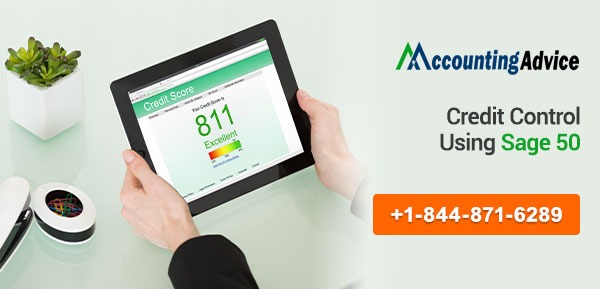Managing Your Credit Control using Sage Accounts 50

Sage 50 Credit control is used to monitor customer’s accounts so that they can stay motivated to pay all outstanding invoices through Phone Calls, Debtor Letters, Statements and Sanctions. All you have to do is write Customer’s Debt and the customer will find it that he/she is not able to pay his/her outstanding invoices.
User Navigation
Steps for Managing Your Credit Control using Sage Accounts 50
Various Customers’ Records are connected to Terms of Payments. It also calculates the invoices of the due dates.
It consists of calculation of starting point and number of days. Example: the employment of payment terms.
- Starting of Month: 30 days
- Date of Documentation: 25 days
Read More : Setting Up Accounts Payable in Sage 50
Ageing Periods
- Outstanding Transactions in the Ageing periods are determined by the length of time since the initially posted time. It can easily be set from three to eight different periods. All the periods have specific days. Typically, it contains a number of days: 30, 60 and 90.
- Enter the date into your computer and the transaction will be aged from the same date only. Normally, it is treated like that your days in payment terms and your date of the first period should be the same.
- The Aged Debtors Report in your first day will show the transactions that are not due for the payment yet.
The transaction along with the ageing period falls into this is printer like
- Customer’s Statement
- Aged Debt Report
Periods of Due Date
Any transaction’s escalation point has been marked with the due date period. It is for those who have passed the due date. 3 to 8 separate due date periods can be set and can also be linked with each of the due date periods.
The calculation of the due date period starts from the day/date of the invoices to be paid and the category, the transactions fall into. These are taken as
- Debtor letters
- Due date reports
Monitoring of Customer Debt
Various inquiry screens and a number of reports are used for monitoring the net amount of debts you carry. It is to view all outstanding debts of the customers in one go with very high convenience.
For Monitoring Total Debt Levels
- Report of Aged Debtor
- There are detailed versions of the summary and report.
Examination of Single Customer’s Debt
- Work space Credit Control
Motivating Customers to Pay
- It gives motivation of paying outstanding debts to the customers. You can send Debtor Letters and Statements to the customers.
- Oldest transaction of the customer is linked with the age of the debtor letter. A debtor with escalating severity can easily be set up and it can be linked to the period of the due date that has been defined.
- Outstanding debts are only produced with the help of debtor letters along with the alignment of generated letters and customer’s oldest debts.
Non-paying Customer Sanctioning
If any outstanding debt is not addressed by the customer, perform this action:
- Reduce the payment terms and credit limit
- Place the account that can be kept on hold so that you can’t raise an
These actions can be linked to the debtor’s letter production so that a certain age can’t be achieved for a letter generation and the sanction can be applied to the customer’s account.
Also Read : Apply Credit towards open Invoices on Sage 50
Final Words
Did you find this article helpful? Do let us know in the space below and we would love to hear from you. Also visit www.accoutingadvice.co for more details on the topic and you are sure to be surprised with the information offered.
Accounting Professionals & Specialized Experts
Want quick help from accounting software experts? Get in touch with our team members who can install, configure and configure your software for you. Proficient in fixing technical issues, they can help you quickly get back to work whenever you encounter an error in Sage software. Our team is available 24/7 365 days to assist you. To get in touch.
Frequently Asked Questions (FAQs)
What are known as the Control Accounts in Sage 50?
Basically the Control Accounts are the nominal codes that Sage Accounts uses when it needs to make automatic double-entry postings. For instance, when you post a sales invoice, the value of the invoice is posted automatically over to the Debtors Control nominal code, as is determined within the Control Accounts window.
How can one Allocate Credit Notes in Sage 50?
When it comes to every transaction you wish to allocate, you are required to enter the payment details as follows:
1. Within the relevant credit or payment on account line, click the Receipt or Payment box
2. Next enter the amount you want to allocate.
3. In case you wish to allocate the full value, click Pay in Full.
What is Meant by Credit Controls in Accounts?
This is the process of checking customers or suppliers in order to determine their credit ‘worthiness’ i.e. whether they are more likely to pay you on time.
